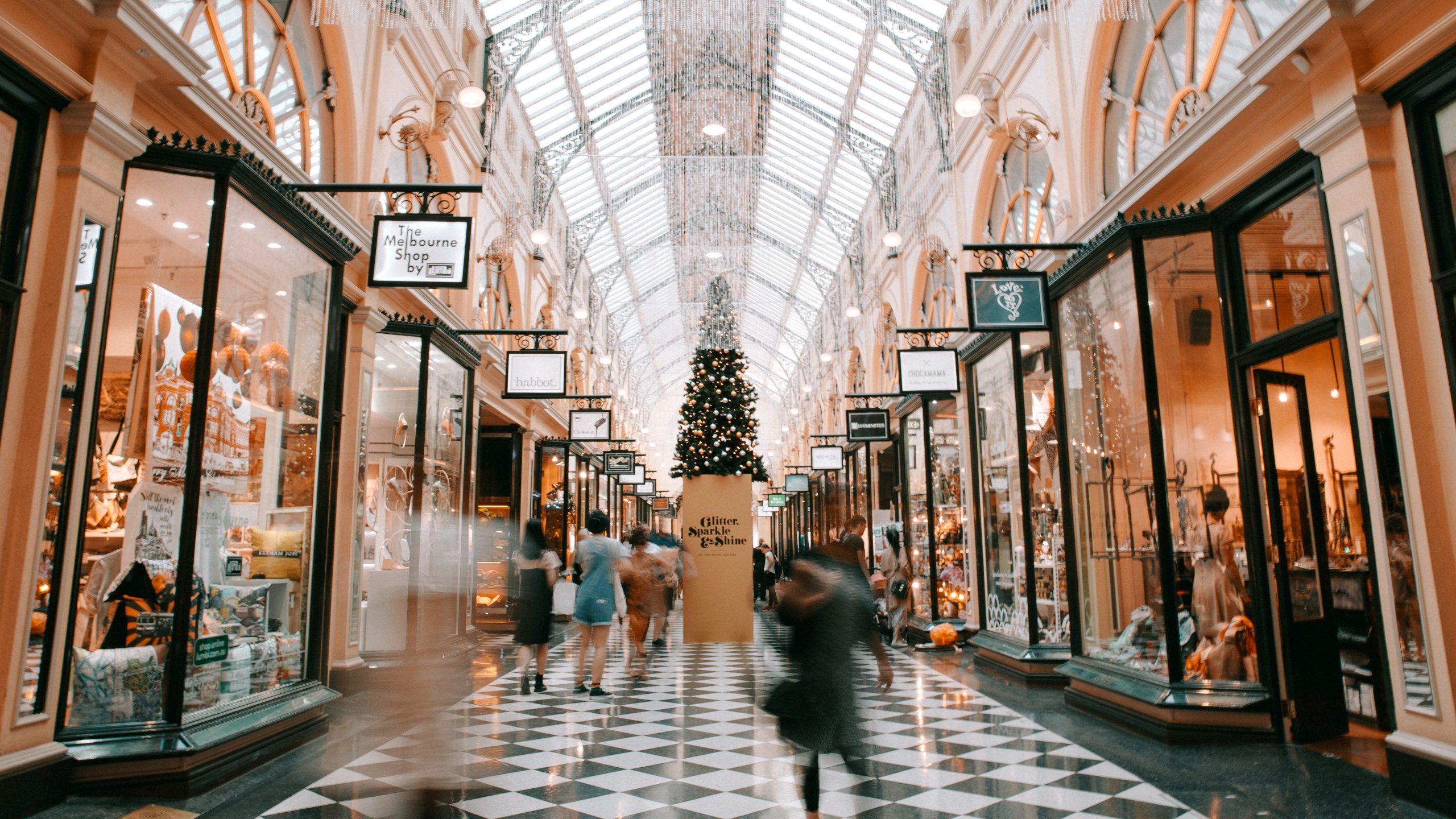Phygital – Physical Retail’s New Role in the Age of Ecommerce

What will be the role of physical retail post COVID-19? According to figures from eMarketer, ecommerce has grown by 27.6% for the year in 2020 despite a global retail sales decline of 3% due to COVID-19. Ecommerce now makes up close to 18% of all retail worldwide, signalling a paradigm shift in global retail strategy .
While the growth of ecommerce has had far ranging consequences across all industries, the positioning of ecommerce and physical retail need not be in opposition.
Enter the term phygital retail. Coined as a term describing the potential synergy of physical retail and digital retail, this relatively recent term has come to describe a variety of approaches to the melding of these two different modes of retail.
Advantages of Ecommerce vs Physical Retail
Before we dive into the examples of phygital retail, we need to understand the ways in which physical retail and ecommerce complement each other:
Ecommerce has the obvious advantages of having lower overhead and being easily accessible. Shoppers can access the digital shopfront at anytime from anywhere they have an internet connection, removing the barriers of physical location.
However, the shift away from buying at brick-and-mortar shops during the pandemic has left shoppers missing the immersive and human side of retail. Physical retail provides immediacy in buying, without the need to wait for shipping. Physical touch of products can be prioritized while customer service and sales associates can provide real-time face-to-face brand experiences. In addition, the physical space of the store serves as a running ad for all passersby in the area.
In the new phygital retail paradigm, brick-and-mortar shops are repositioned as marketing opportunities rather than merely marketplaces, recasting our understanding of the role of physical retail spaces. Sales associates and customer service professionals are employed to facilitate experiential engagement with brands and physical products serve as samples to try before buying.

The Chinese Market – Leading the Way in Case Studies for Phygital Retail
With in-person shopping having become feasible by the summer of 2020, and with no barriers to shopping in-person in 2021, China is the first major economy to have emerged from the COVID-19 crisis. How has phygital retail played out post-crisis, and what path does it chart for other markets as they emerge from COVID-19?
Here we explore a few trending models for phygital retail in the Chinese market: omnichannel, social retail, and mobile stores.
Omnichannel
There are many names for this phygital retail model, be it “O2O” (online to offline), “unified commerce”, or “new retail”. At its core, it encapsulates the essence of phygital retail – a seamless blend of digital products and offline customer experiences with multiple points of connection.
Hema is an omnichannel Chinese grocery/restaurant chain. With brick-and-mortar stores all across China, groceries or cooked meals can either be bought in store or bought on the app to be delivered to homes in most major cities within 30 minutes. Using the app within physical stores, shoppers can also scan items to find out more detailed information on products.
Social Retail
Social retail is a more common phygital model for luxury retailers. It combines the leisure entertainment and showrooming potentials of physical retail with the digital connectedness of ecommerce. Physical spaces serve to market a luxury lifestyle as opposed to just products.
Burberry’s social retail store in Shenzhen is an upscale boutique for shoppers to interact with the brand both in store and on social media. With a high-end café and a dedicated WeChat Mini program that gamifies online and in store engagement, the Burberry shop in Shenzhen encourages customers to fully engage with the Burberry lifestyle both online and offline.
Pop Up Stores
Pop Up stores are a more cost-effective model for brands, as it does not require a full-time brick-and-mortar store. It can be understood as a form of guerilla marketing. This phygital model also allows for the marketing of physical retail to reach places that get less attention, especially rural areas.
With Chinese electronics ecommerce retailer platform JD moving into the luxury market, JD launched their Fashion Space concept in their physical stores. As a pop-up space for the various brands sold on the platform, JD’s Fashion Space integrates fashion, high-tech, and art. Providing shoppers in physical stores with a gamified VR dressing machine to mix and match outfits, this mobile store allows featured brands a temporary physical space to engage with customers.

Conclusion
The new paradigm of phygital retail encourages the synergy of digital immediacy and physical immersion. It uses physical retail to facilitate ecommerce and vice versa. It requires us to understand what physical retail can provide customers that online cannot replace – face-to-face interaction – and what digital can provide customers that physical cannot replace – accessibility.
When pursuing phygital retail strategies, brands should understand what parts of their brand identity can be cohesively and seamlessly integrated into each form of retail.
How Melchers can support foreign businesses in the Chinese retail market
While the outlook for the Chinese retail space is promising and the numbers presented in this article are attractive for every foreign brand and retailer, entering China and being successful is easier said than done. Competition is cut-throat and as described, a company active in Chinas retail landscape needs to be agile and adaptive. Staying on top requires a strong commitment and investment from the foreign brand, paired with local market knowledge. Many companies have chosen to cooperate with a partner who is experienced and understands the local market to drive their business. With longstanding experience and knowledge on the Chinese retail landscape, deep understanding of local customer behaviour and a well-established distribution network, Melchers for instance, is able to offer tailored and brand-oriented market approaches. Melchers helps its brand partners to understand the Chinese premium consumer goods retail market, to quantify the scale and the competitor landscape and to identify short, mid and long term opportunities for market growth. Melchers is even able to provide fully integrated retail operation services if it is required by its brand partners.
For more information about establishing a retail presence, contact us at [email protected].


